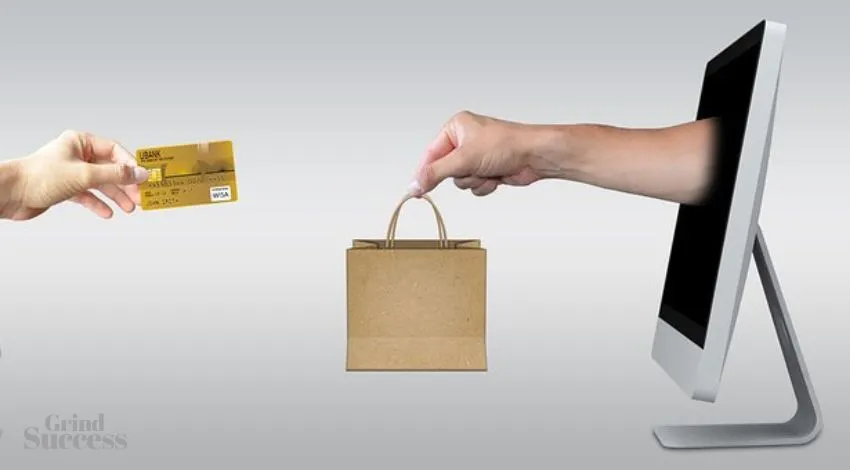What All Digital Payment Technologies You Must Integrate into Your Business For Better UX
It doesn’t matter if you run an eCommerce platform or are just keeping up with your online presence—you want to give your consumers a secure, quick, and simple way to pay. The payment method you use must meet the needs of both your customers and your company.
Therefore, it must be secure from fraud, accept various payment options, be user-friendly, and work with your platform.

A merchant uses a payment gateway to process credit or debit cards and accept electronic payments. The currencies you can accept, the transaction cost, the speed at which funds arrive in your merchant account, and the payment options you’ll provide are all influenced by the payment gateway you choose.
Digital payments: what are they?
A digital payment, often known as an electronic payment, is the exchange of money from one payment account to another via a computer, mobile phone, POS (Point of Sale), or other digital devices, as well as mobile wireless data.
There are many benefits of digital payments like Cost savings, Transparency, and security, Financial inclusion, Women’s economic participation, and Inclusive growth.
To make a digital payment, you must use digital payment technology, such as a mobile wallet or mobile payment software, to move money or digital currency from one account to another. Digital payments are also known as electronic payments.
Digital payment technologies
Machine learning and artificial intelligence technologies make these digital payment systems possible. Machine learning technology can learn from consumer purchases made with their cards, mobile wallets, or applications to enhance them over time.
This enhanced experience ensures greater fraud protection and security. Here are some of the several digital payment options to take into account.
1. Bitcoin payments
A list of digital payments would be incomplete if it omitted the topic of cryptocurrencies. Although cryptocurrency has become more widely accepted, many people are still unaware, mainly when businesses accept it as a legitimate means of payment.
Bitcoin is an example of a cryptocurrency, or virtual currency, designed to function as money and a form of payment independent of any single person, group, or entity, thereby eliminating the need for third-party involvement in financial transactions.

Cryptocurrency is a decentralized currency managed by no financial institution. It is built on the blockchain, a secure digital infrastructure impervious to fraud and theft.
It has since become the world’s most well-known cryptocurrency. Its popularity has sparked the creation of numerous other cryptocurrencies. Bitcoin Price Prediction predicts that the price of BTC will rise by $858.57 in the next seven days, reaching $17,693.27 by December 29, 2022.
2. Mobile point of sale (mPOS) systems
Mobile point-of-sale systems come to mind the most frequently when discussing digital payments. mPOS systems use mobile phones, tablets, and other wireless devices to accept payments anywhere.
The biggest winners from mPOS systems are eateries, shops, and mobile service providers. They let you use the gadget wherever you need to accept payments, including those from bank cards and mobile wallets.
Wireless tools give business owners more freedom. With the advent of social distancing, those with mPOS devices could meet consumers where they sat, reducing contact and crowding at checkouts.
Additionally, most mPOS software packages include tools that enable businesses to send receipts, monitor sales, and inventory, and even set up loyalty programs that are integrated directly into the system.
It’s a more practical, contemporary approach to receiving payments, improving customer satisfaction, and increasing efficiency.
3. Cashless transactions
Consumers and businesses alike are quickly adopting contactless payments as standard practice. Thank goodness, contactless is now accepted by the majority of merchants who take card payments.
To conclude the deal, contactless cards can connect to the necessary hardware. With the use of the same technologies, mobile wallets have become a reality. This technology supports credit cards and mobile wallets.

Additionally, providers like Apple Pay and Android Pay don’t charge for transactions, which is good news for mobile wallets. Merchants only need to check the fees through the payment processors.
Your major objective as a business owner should be customer happiness. This is necessary if you want your clients to enjoy working with you and return frequently.
However, handling customer payments can be laborious and time-consuming. The majority of the time, this is a result of the fact that you find your own payment alternatives handier than those of your clients.
Customers will be able to select their preferred payment option if you provide a range of payment options, which will result in speedier payment.
By including online payments in your list of choices, you give your consumers the freedom to pay using whichever method suits them best. Both consumers and business owners can gain from digital payment methods in different ways.
4. Digital wallet payments
Without a physical payment card, customers can make contactless purchases linked to their card information using a digital wallet. A mobile device contains what is effectively a virtual Visa or Mastercard.
The adoption and use of digital wallet technologies have become relatively simple for users. Nearly every smartphone is shipped with a pre-configured wallet. Apple Pay is available on the iPhone, Samsung Pay on the Galaxy, and so on. Because of how simple it is to use and set up, customers are adopting digital wallets at a quick rate.
Most physical POS systems that support contactless payments also accept payments made using mobile wallets, which is fantastic for retailers.
How a Digital Wallet Works
Digital wallets are applications intended to exploit the capacities of cell phones to further develop admittance to monetary items and administrations. Digital Wallet basically takes out the need to convey an actual wallet by putting away a shopper all’s installment data safely and minimally.
Digital Wallet utilizes a cell phone’s remote capacities like Bluetooth, wifi, and attractive signs to send installment information safely from your gadget to a retail location intended to peruse the information and interface by means of these signs.
Types of Digital Wallets
5. Peer-to-peer digital payments
Peer-to-peer payment apps like Venmo, PayPal, and even Facebook Messenger are examples. Users can utilize these platforms to find other users and conduct online transactions between themselves.
Peer-to-peer solutions give users a simple way to send money by connecting to the payer and payee’s bank accounts to withdraw and deposit money. Most of the time, money transfers between users who don’t have the same bank account are difficult with mobile banking apps. Solutions that are peer-to-peer fill this gap.
Peer-to-peer payments enable users to transmit money rapidly while protecting the confidentiality of their bank account information.
The recipient’s email address or phone number is all that is needed to send a payment; you can add someone as a contact within the app using one of those details. These programs, which are typically free, make it simple to split expenses with friends and family.
6. Biometric authentication
Although utilizing biometrics can be intimidating, most users already use this technology to open their phones numerous times daily. In essence, it serves as a tool for identity verification, ensuring that only the owner of the bank account or digital wallet may authorize transactions through it.
Most mobile wallets use biometric authentication today, necessitating the user’s fingerprint to be scanned to open the wallet. Facial recognition can also serve as the authenticator for payments if it has been enabled.
One of the safest methods for confirming the identification of the individual doing the transaction is biometric authentication. This makes fraudulent payments incredibly challenging, another reason customers quickly switch over.
7. Social media payments
Using the mobile-commerce functionalities that some social networking sites have built in, small businesses are using social media to accomplish tremendous things. Business accounts on Facebook, Instagram, and Pinterest have a built-in social commerce feature that includes in-app transactions.
Any company conducting online sales or using social media to advertise its products should be familiar with accepting digital payments on these platforms.

Nowadays, it’s common for brands to develop only through social media. Some might start as social media influencers, build a sizable fan base, and then venture into their product lines.
Anyone who owns a website knows the effort required to increase visitors. Why remove them from an established social media network when you could interact with them and collect payment from them instead?
The platform determines the optimal approach to taking payments on social media. Look into your account settings to find out how to start accepting money because social media sites like Facebook, Instagram, and Pinterest each have special social selling tools.
Bottom line
Cash management is eliminated resulting in a lower risk of theft and reducing the cost of security and storage.
Not every business owner must immediately set themselves up to accept the payment mentioned above. To be prepared to change when necessary, it is helpful to be aware of them.
Selecting a payment processor that accepts the most common payment options available today is also advantageous.
